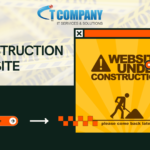We wouldn’t have to watch as much now if we could just toss in a lot of keywords and call it SEO. Especially when algorithms change so frequently. However, if you want your WordPress site to survive, you must stay on the top five pages of search results, which account for 67.60% of hits.
Do you have any doubts about the quality of your SEO? Here are the following seven indicators that your WordPress website is not SEO-friendly.
Slow Page Loading
In a nutshell, if a website takes more than 3 seconds to load, 53% of internet consumers would quit it. We are accustomed to immediate access to information, and we know that other websites can deliver information more quickly. Google likes fast websites (its goal is half a second) and ranks them higher.
You may use tools like WebPageTest or PageSpeed Insights to test loading speed. If you’ve observed that your WordPress website is slow loading, here are a few fast fixes.
Choose Better Hosting
Depending on the size of your website, select an appropriate Webhosting provider and package. A basic, shared hosting plan may suffice for websites with less than 1,000 daily visits. However, if you have a large website, you will need to scale up your plan to meet such traffic quantities successfully.
Image Size Reduction
Images are typically heavier than anything else and are one of the primary causes of a slow-loading site. You should reduce the size without sacrificing quality on your own using Photoshop.
Reduce the size of CSS and JS files
Reduce the amount of CSS and JS calls, as well as the number of files on your site. You may use Google’s guides to accomplish this manually. Keep the following considerations in mind:
- Use a CDN to compensate for differences in internet speed between countries.
- uninstall unused plugins.
- clean the database (remove unnecessary info, bot comments, outdated draughts, and so on)
- minimize the use of external scripts.
Design That Isn’t Responsive
Smartphones have most likely replaced PCs in our daily lives. We can fathom taking a vacation or even going for a walk in the park without our laptops. But what about smartphones? It is just easier to unlock the phone and search than to wait for the computer to boot up.
You should make sure your website has a responsive design. This may make sense if you do not want to modify your present theme, but it will need coding skills and a significant amount of work and testing.
However, the best option is to just select a responsive theme. The wordpress hosts have a plethora of free responsive themes available. In addition, almost all premium themes are responsive. The benefit here is that the theme is tested to ensure your site looks excellent on mobile. As a result, you won’t have to make any more effort. Take, for example, the Total WordPress theme. This theme has been skillfully built and designed with a fluid, responsive design that looks fantastic on any device. There are also customisable breakpoint options if you wish to fine-tune your site design even more.
Perplexing URL Structure
Clear URLs are largely crucial for algorithms, not readers. Because bots scan URLs in the same way that ordinary people read titles, a good URL should include the core theme of the post as well as important keywords. If the link has random digits and letters, the bot will not scan the web page.
Missing XML Sitemap
The XML sitemap is an essential component of every website. This list specifies your general website structure so that search engines may scan and index your content. A sitemap is required for any website; therefore, you must develop one.
A sitemap should naturally organize the content on your website. Consider it a tree with branches. For example, you might have a blog, then blog posts, and then for those entries, you could have a category, author, title, and so on.
Manually creating sitemaps is possible, but installing a plugin is all that is required to generate a WordPress sitemap. XML sitemaps are a standard element of the most effective SEO plugins.
Incorrect title tags
The search engine results are given in the following order: link, title tag, and meta description. Because links are frequently printed in small sizes and the URL is not the user’s first focus, they will notice the title at the start.
Search engines do pay attention to titles. They may even rank popular sites lower just because their title tag does not accurately reflect the post content. Pages with descriptive names are simpler to discover in the variety of open tabs and post appropriately on social media.
So, keep your titles to 60 characters or fewer, avoid capital titles, don’t overuse keywords, and include your brand name at the end. The primary piece of advice is to make it represent the content of the page: smart and amusing titles are innovative, but they may not be the ideal option for SEO ranking.
Meta Description
Meta descriptions are written with humans in mind, not search engines. It is a preview of the content that consumers use to determine if the web page is relevant to them. As a result, a solid meta description might be your ticket into the realm of high click-through rates. Because Google favours pages that are viewed frequently, employing meta descriptions is an indirect approach to improve your SEO game.
So, what should the meta description look like?
It must be roughly 160 characters long, comprise simple words and brief sentences, and describe what your page is about. It also makes sense to add certain keywords but avoid keyword stuffing at all costs and a call-to-action. One of the finest pieces of advice we’ve received is to treat your meta description like an advertisement, appealing to pain points and emphasizing urgency.
Overuse of Keywords
Search engines are not as near to humans in terms of reading and evaluating material. People look for relevancy and the number of keywords that correspond with it.
When SEO originally became popular and algorithms were simple, websites would stuff a lot of keywords into a single post. Keyword stuffing should be avoided because there is such a thing as too much of a good thing nowadays.
Google promotes not simply more relevant material, but also better information. The writing becomes quite artificial because of stuffing, which severely reduces the quality. Marketers create unnecessary words to employ a certain keyword, and the same term appears three times in a three-sentence text. That is why Google may rank pages with too many keywords lower.
When is it too much, you might wonder? SEO marketers, share their secrets at 3-5% keyword density.
Diversification and variety are two more guidelines for improved keyword utilization. Google, for example, values sites with a range of keywords and synonyms far more than ones that use the same phrase again and over.
Content Duplication
We understand that creating content is difficult. You must always keep an eye on trends and put in effort while writing or creating something. However, it is preferable to develop less material yet give a distinct piece. It is not only a moral issue. Because search engines are ethical robots, they will simply rank the copied information the lowest.
Sometimes, there is duplicate content on a single website. Your product descriptions, for example, are remarkably identical or contain the same URL parameters. As a result, you should try to distinguish descriptions on the website.
Avoid stealing or automatically rewriting text when dealing with external duplicate content. Sometimes you may unintentionally plagiarize content: after all, all types of statements have been used on the Internet. To avoid unintended copying, utilize a plagiarism checker.
What Happens If Someone Steals Your Content?
If someone else has duplicated your stuff, don’t be hesitant to contact them. You may ask them to include a rel=”canonical” element pointing to your site. This effectively credits your site as the source. Moreover, this is how medium works when you choose to republish an item on their site. If you want the offending site to delete the copied content, you may issue a DMCA takedown complaint. Both are viable options for dealing with duplicate content on the internet.
SEO is a continuous process
SEO is no longer as simple as it once was. However, removing all the indications outlined in the essay is extremely feasible. And most of them are manageable with the aid of decent hosting and an SEO plugin, both of which will greatly minimize the amount of time you spend on-page optimization.
Looking for the best wordpress host? Visit now!








